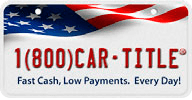Learn How to Create a Budget in 3 steps and Stick with It
By carloansadmin • July 14, 2016
When you’re in a financial crunch or are saving up for a major purchase, like buying a car, a house, or a family vacation, your best bet is to create a realistic financial budget. If you create a budget, it will help you reach your goal more efficiently. When you allocate a specific amount for expenses to each category of your life, you can see where you’re using most of your income and where you need to cut back on expenditures. Create a budget to help you pay off your debts quicker and become more financially responsible, whether you’ve just turned 18 or 45..
- Do some investigative work. Track your spending habits.
- Create automatic savings with each check you receive
- Prioritize your Expense categories
- Stick with your budget
Tracking your spending habits
This is the most tedious step when you create a budget , but it’s also the most required part. You need to know what you’re doing right now in order to change your buying habits. There are many apps or spreadsheets you can download to track and organize your monthly costs. (See below at the bottom of this page for more resources.) In doing this, you’ll need to write down every single transaction, including those ATM fees or 50 cent credit card usage fees at gas stations. Track your Expenses for at least a month; you’ll be able to divide your budget up better once you see how much you’re spending in each category.
Automated Savings Deductions
If you have a checking and savings account, you can easily set up automated savings deductions. If you get paid twice a month, schedule 10% of your check to be deposited into your savings account. You have other options besides a personal savings account to deduct the 10% into. There are certificates of deposits in short or long-terms, individual retirement accounts, IRA, and your 401(K), if you have that available to you.
Prioritize Your Expenditures
This is where your budget tracking comes in handy. It is recommended that 35% of your income should be set aside for housing expenses, including paying for utilities. 10% should go to any big savings fund you might have; you might be saving for a college fund for your child, a vacation, or a new car. The remaining 45% should be used for paying off debt. This doesn’t mean that you need to spend the whole 45% on paying off loans and credit cards, it means that you should focus on paying it off as quickly as you can. Don’t forget to give yourself a budget for having fun too. A financial plan without money set aside for entertainment and other fun things, has a lower chance of success because it leads to impulse buying.
Stick with Your Budget
Staying within your limit for each category won’t be easy at the start; you’ll want to have the freedom to buy what you want and when you want. There are some things that you can do to help yourself resist overspending. First, you may want to set up automatic payments for your mortgage, rent, car payments, credit card payments, or whatever other bill you can set up automated bill pay for. Second, withdraw and use cash for the rest of your budgeted purchases. It’s tempting to swipe your credit or debit card for purchases, but it doesn’t allow you to see how much of your budget is being used up or see when you are beyond your budget. By withdrawing your budgeted amount at the beginning of the month, you can see your spending habits more clearly and be more careful on what you’re handing over your cash for. Last, don’t try to live above your means. Don’t overspend with money that you don’t have; yes, that means credit cards. Use the money that you have and make sure you have no added debt at the end of the month.
References:
Links to apps/spreadsheets:
Mint.com
https://www.mint.com/
GoodBudget App
List of top Apps:
Spreadsheet
https://www.bankofamerica.com/deposits/manage/creating-a-budget.go –At the bottom of the page there is a download link
More Resources
- Apply Online Now
- Title Loan Refinancing
- How Much Can I Get?
- Get Cash in California
- Get a Title Loan In Georgia
- Car Title Loans
- Title Loans in Utah
- 1(800)Car-Title-Loans
- Pink Slip Title Loan
- Get a Title Loan with an Old Car?
- Sacramento
- St Louis
- Get a Loan In Fresno
- Our Service Projects
- Find a Title Loan in Arizona
- Should I Get a Title Loan or a Payday Loan?
- What are My Title Loan Options
- Improve Your Credit with Title Loans?
- Se Hable Espanol
- Collateral Loans on your RV
- Get a Loan in Salt Lake City
- Get a Loan in Bakersfield
- Get a Loan in Idaho
- We’re Partners with Moneygram
- Different Programs
The post Learn How to Create a Budget in 3 steps and Stick with It appeared first on (EN) 1(800) Car-Title®.
HOW MUCH IS MY CAR WORTH?













